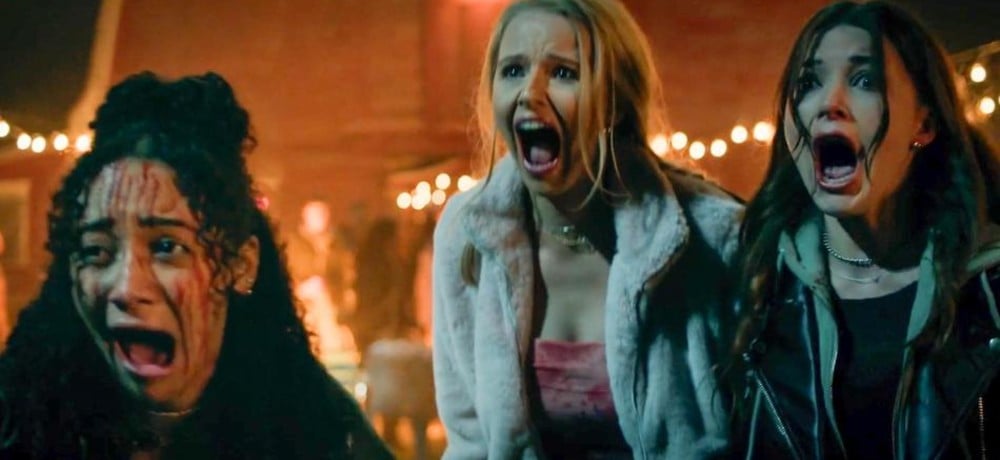![The Eastfield Exorcism’ Takes A Fresh Approach [Review] The Eastfield Exorcism’ Takes A Fresh Approach [Review]](https://www.dreadcentral.com/wp-content/uploads/2023/04/godless-568x320.png)
One of horror’s favorite tropes is the exorcism. Since the release of The Exorcist in 1973, popular culture has been fascinated with Christianity being pitted against biblical evils consuming the soul of an innocent person, who is almost always a young white woman or girl. Nick Kozakis’ Godless: The Eastfield Exorcism finds a unique workaround for this by exploring the violence and consequence behind the reality of real-world exorcisms.
Religious horror, which is as popular as ever, is a convenient and morally acceptable conduit for exploring disturbing themes like torture and despair. While the horror genre at large is often rejected by Christian culture, it becomes socially acceptable when paired with religion, especially while directly or vaguely depicting shared subtext, stories, or values. So many of us who are raised with Christianity find exorcism horror to be especially frightening because, by the rules of this religion, these films are touching base on believable horrors. Vampires, zombies, and ghosts are easy to deny … but if you were raised to believe in hell, the devil, and biblical demons, films like The Exorcist may be hard to ignore.
Godless: The Eastfield Exorcism capitalizes on the tropes of religious horror while uniquely approaching them with a non-religious lens. The film concerns Lara (Georgia Eyers) and Ron (Dan Ewing), a young couple in rural Australia who have reached a breaking point. Lara’s mental health has hit a state of emergency and she is in clear need of medical intervention. But when their religious community convinces Ron that a spiritual intervention is a better solution, they find themselves at the hand of an unorthodox exorcist (Tim Pocock) who utilizes extreme measures to exorcise Lara of her “demons.”
Director Nick Kozakis and writer Alexander Angliss-Wilson are careful to specify early on that Godless is not a horror film leaving much up to interpretation. Lara’s mental health issues are never a matter of question, and the actions committed by the religious extremists who cause her harm are never balanced out with the question, “well, what if they’re right?” The film takes a firm stance early on that it is showcasing the horrors of humanity, not ghouls of the supernatural realm. This is what makes this story a fairly unique spin on the exorcism subgenre. That said, when poor Lara is in a state of hallucination, the filmmakers take advantage of it by projecting her visions as grisly, devilish imagery. I can understand why they did so, as it does help to heighten the mood and style, but I believe the utilization of this familiar religious horror woodwork is counterproductive.
While some budgetary restraints are visible, the performances by Eyers and Ewing carry Godless with relative ease. Lara’s confusion and pain is unignorable, and all the audience wants is for her to escape and be well. Ron’s stubbornness is infuriating and even occasionally understandable. These are victims of community and groupthink, and the horrors of religious extremism are downright chilling when the film is at its best.
!['Godless: The Eastfield Exorcism' Takes A Fresh Approach To Familiar Themes [Overlook Film Festival 2023 Review] godless 960x1358 - 'Godless: The Eastfield Exorcism' Takes A Fresh Approach To Familiar Themes [Overlook Film Festival 2023 Review]](https://www.dreadcentral.com/wp-content/uploads/2023/04/godless-960x1358.jpg)
Godless: The Eastfield Exorcism had its world premiere at The Overlook Film Festival on March 31st, 2023.
-
Godless: The Eastfield Exorcism
Summary
‘Godless: The Eastfield Exorcism’ finds a unique workaround for the sensationalism of religious horror by exploring the violence and consequence behind real-world exorcisms.




![‘Trick or Treat’ 4K offers a tight package of an era [Review] ‘Trick or Treat’ 4K offers a tight package of an era [Review]](https://www.wickedhorror.com/wp-content/uploads/2025/03/Sammy_2.jpg)























